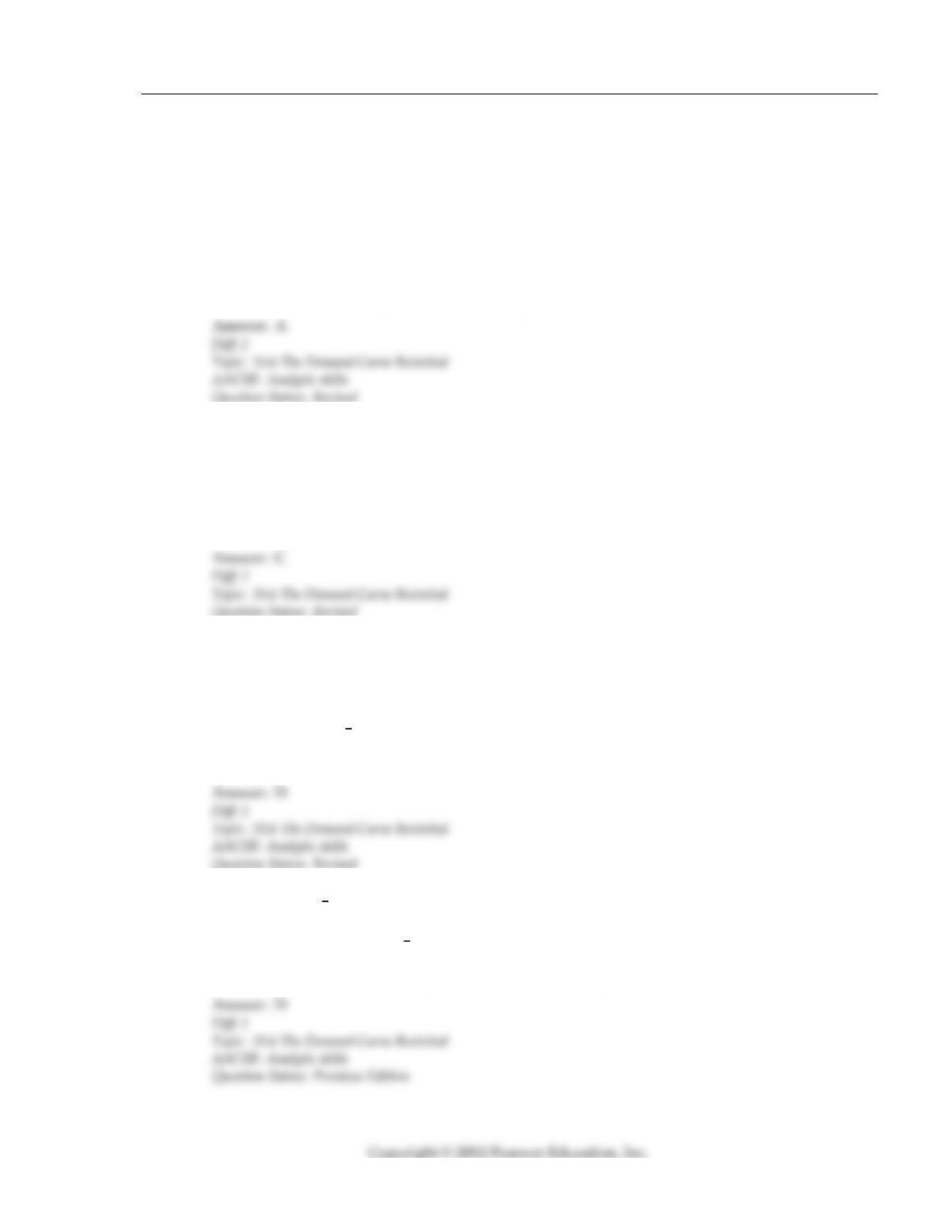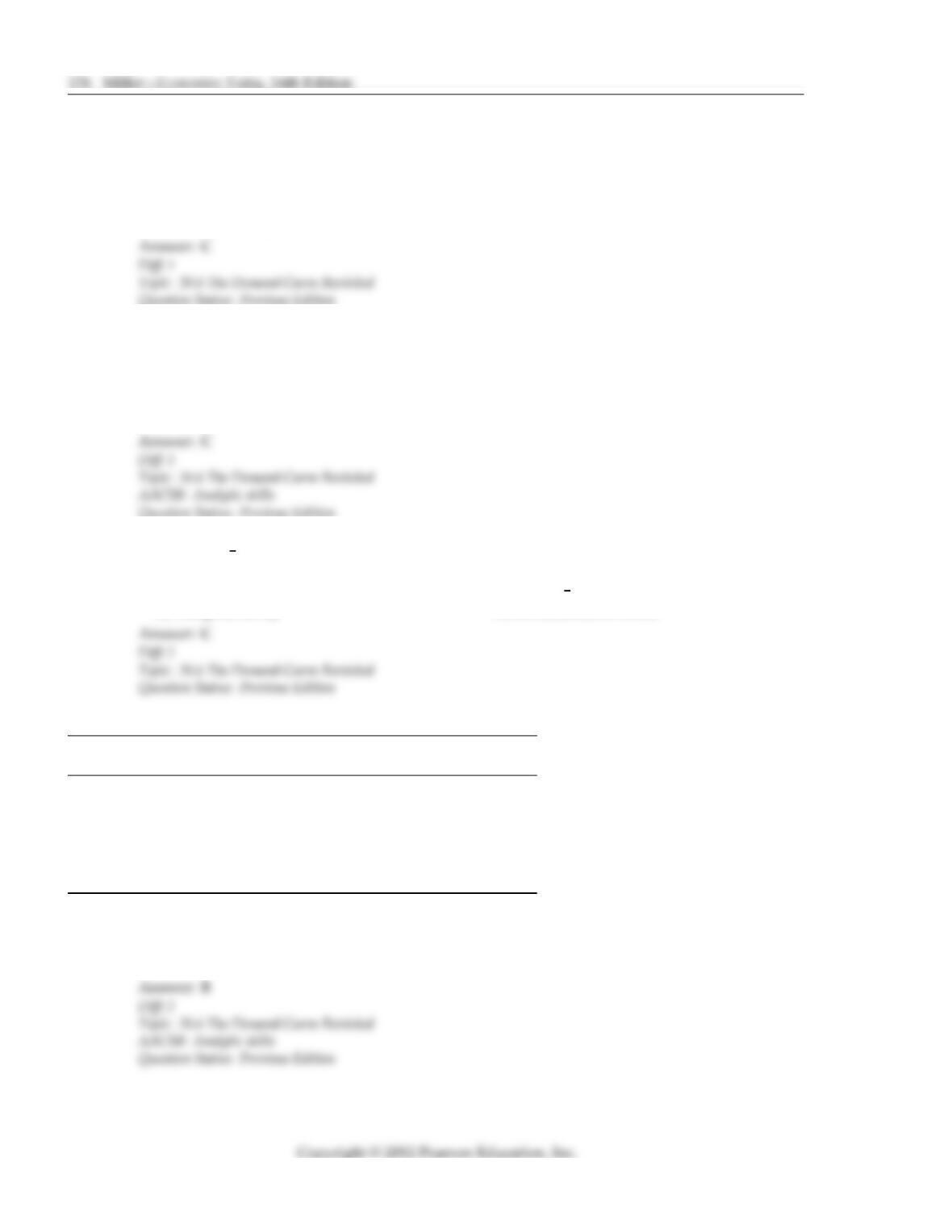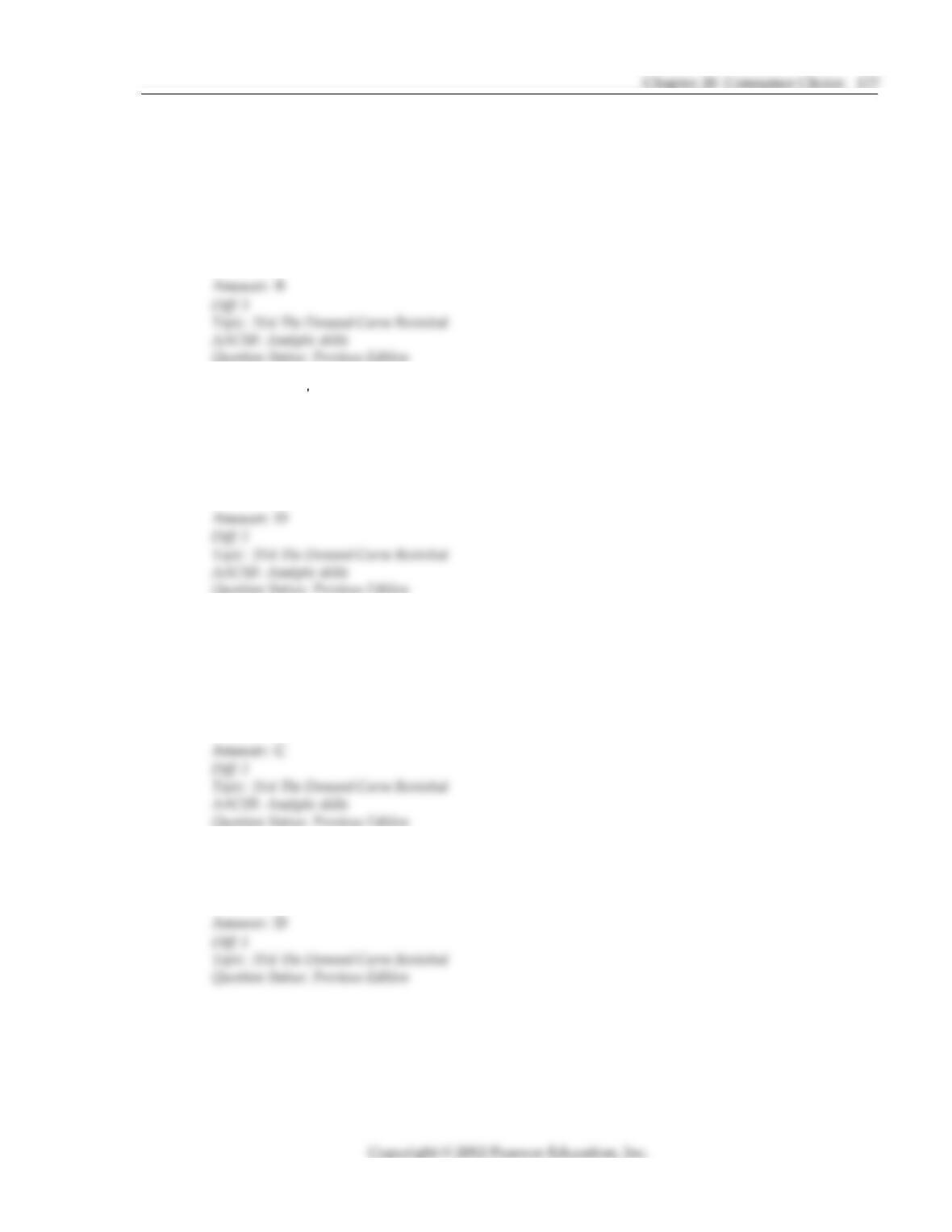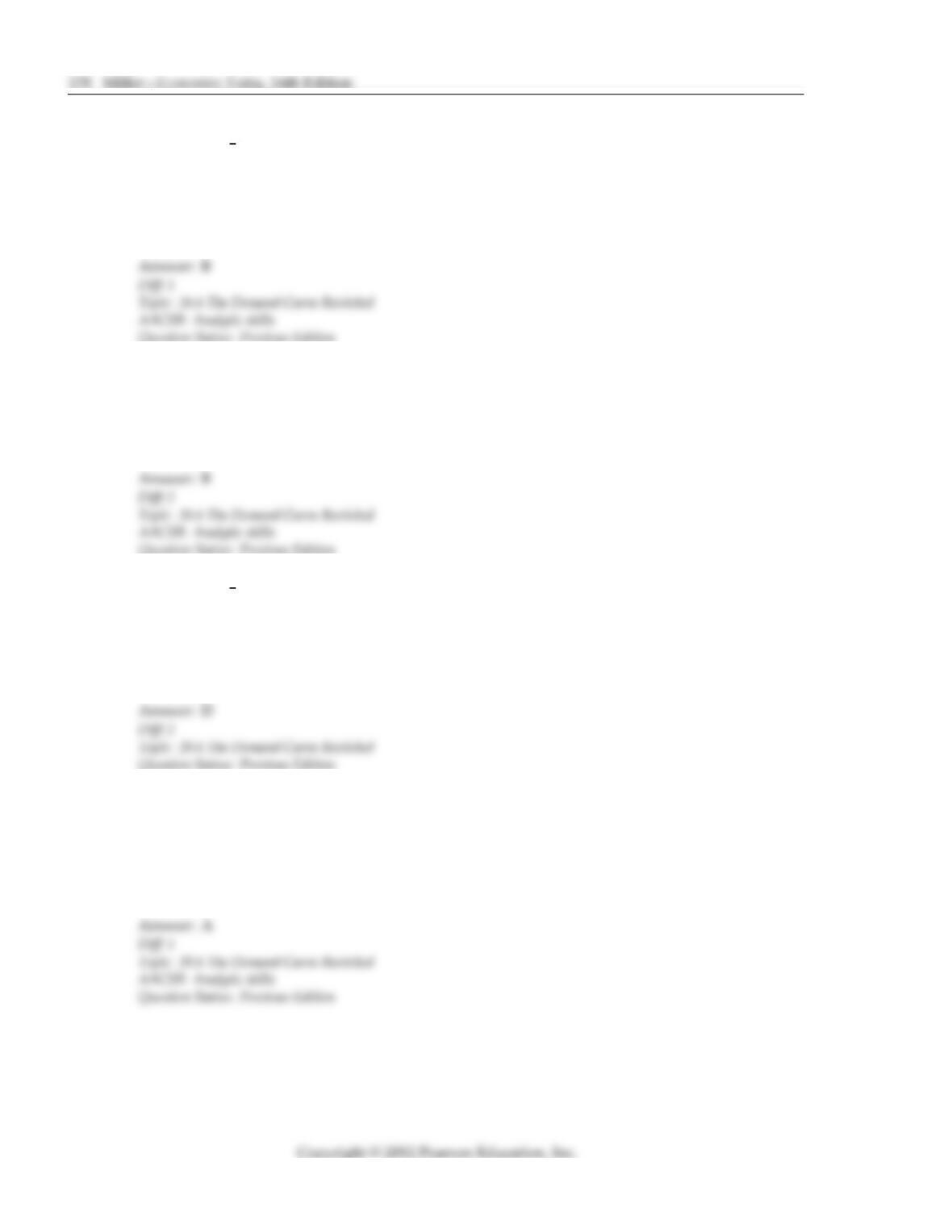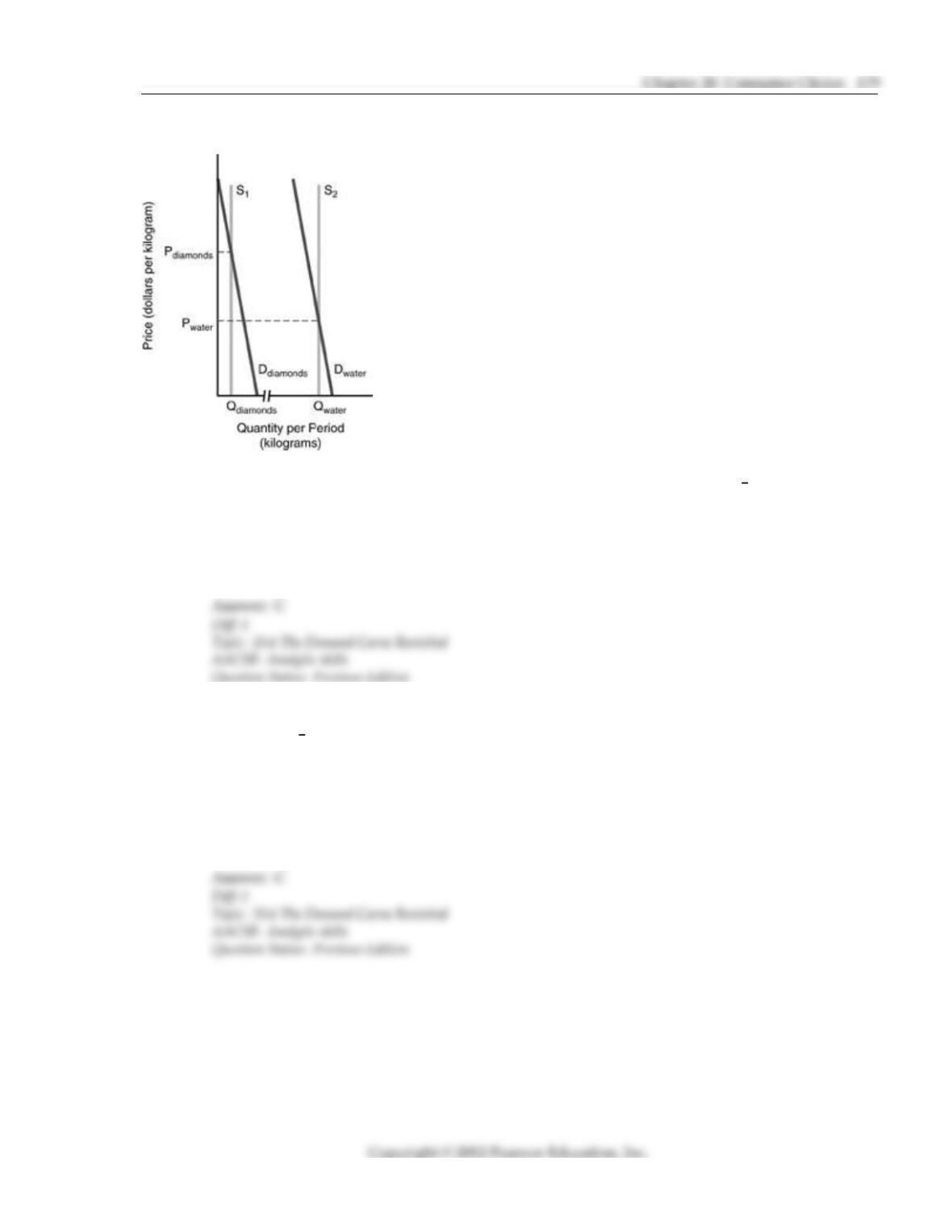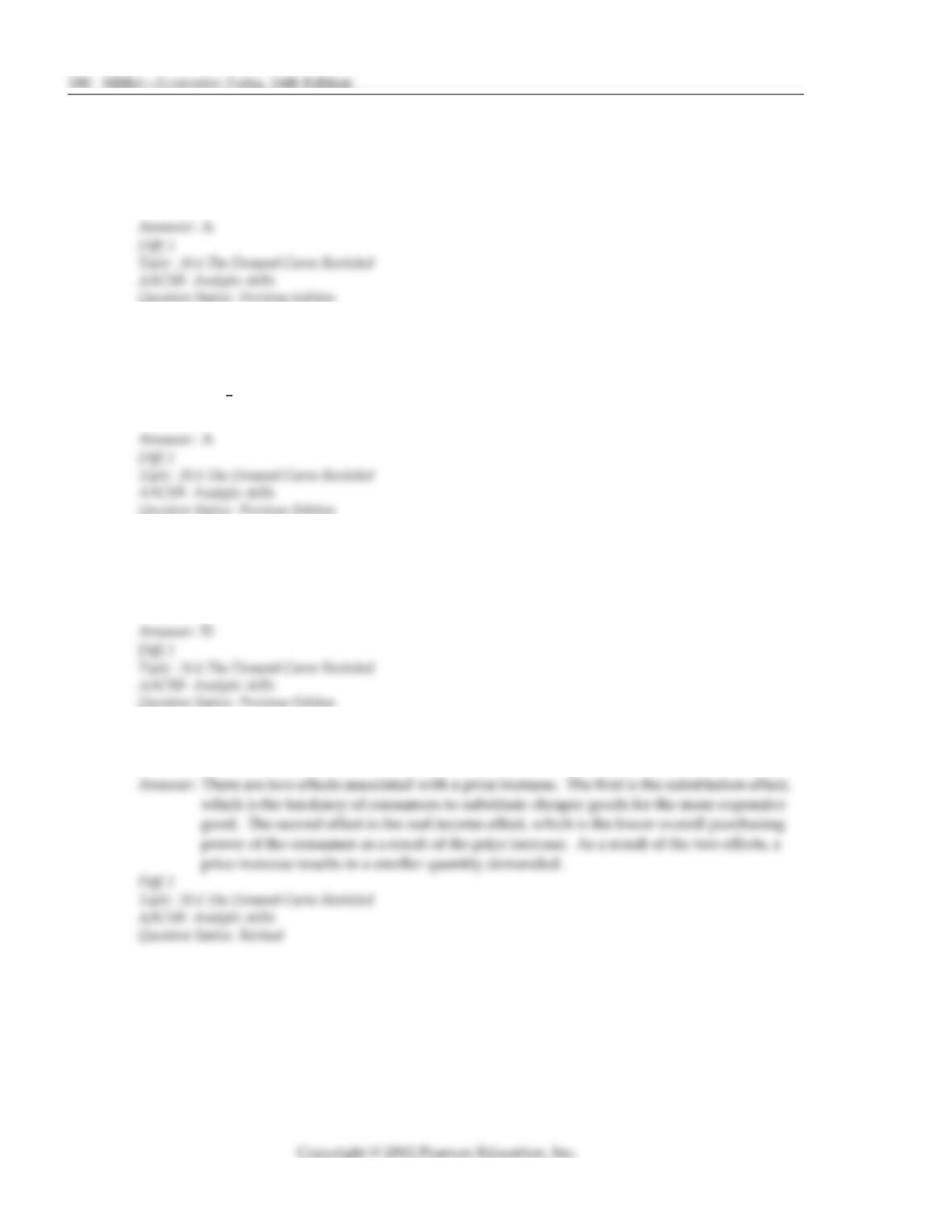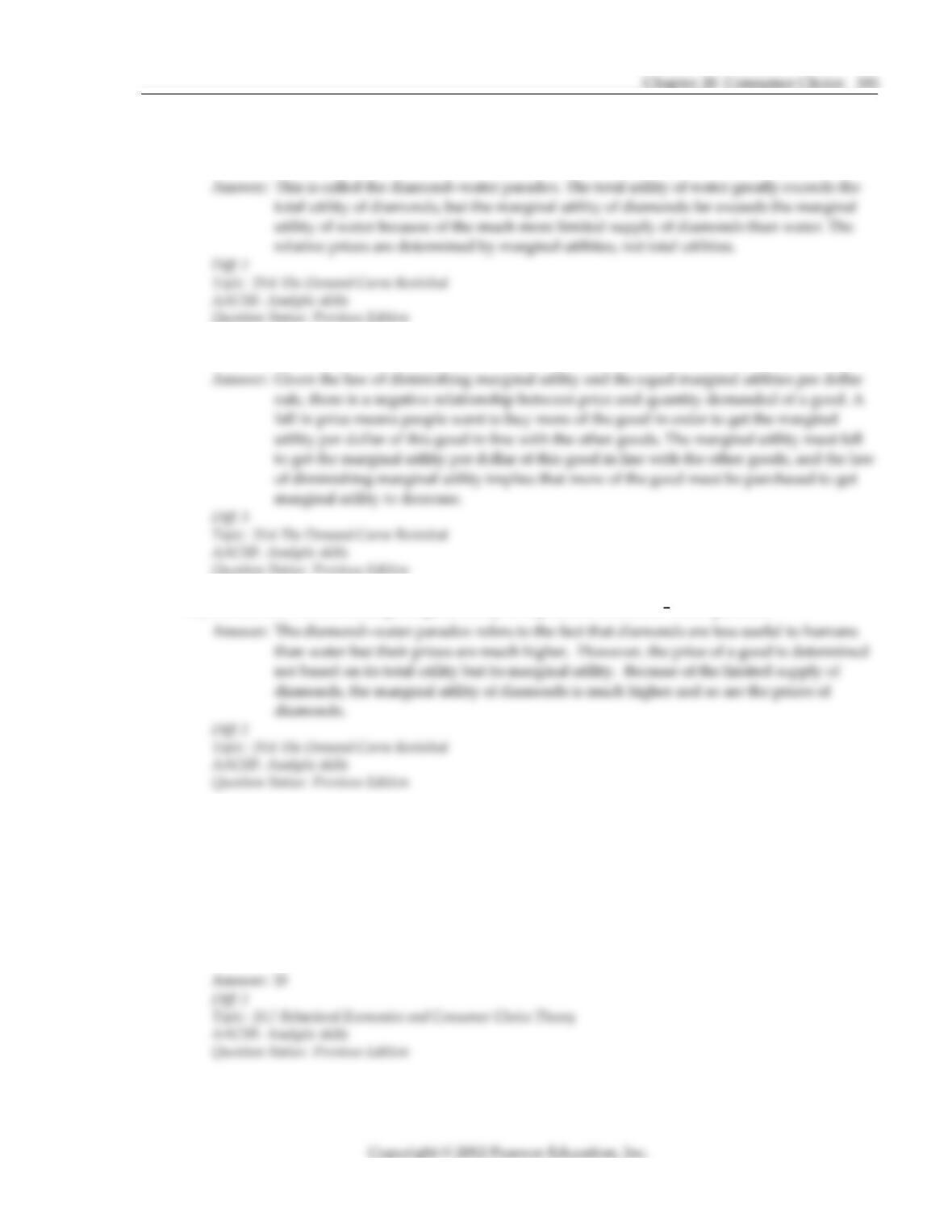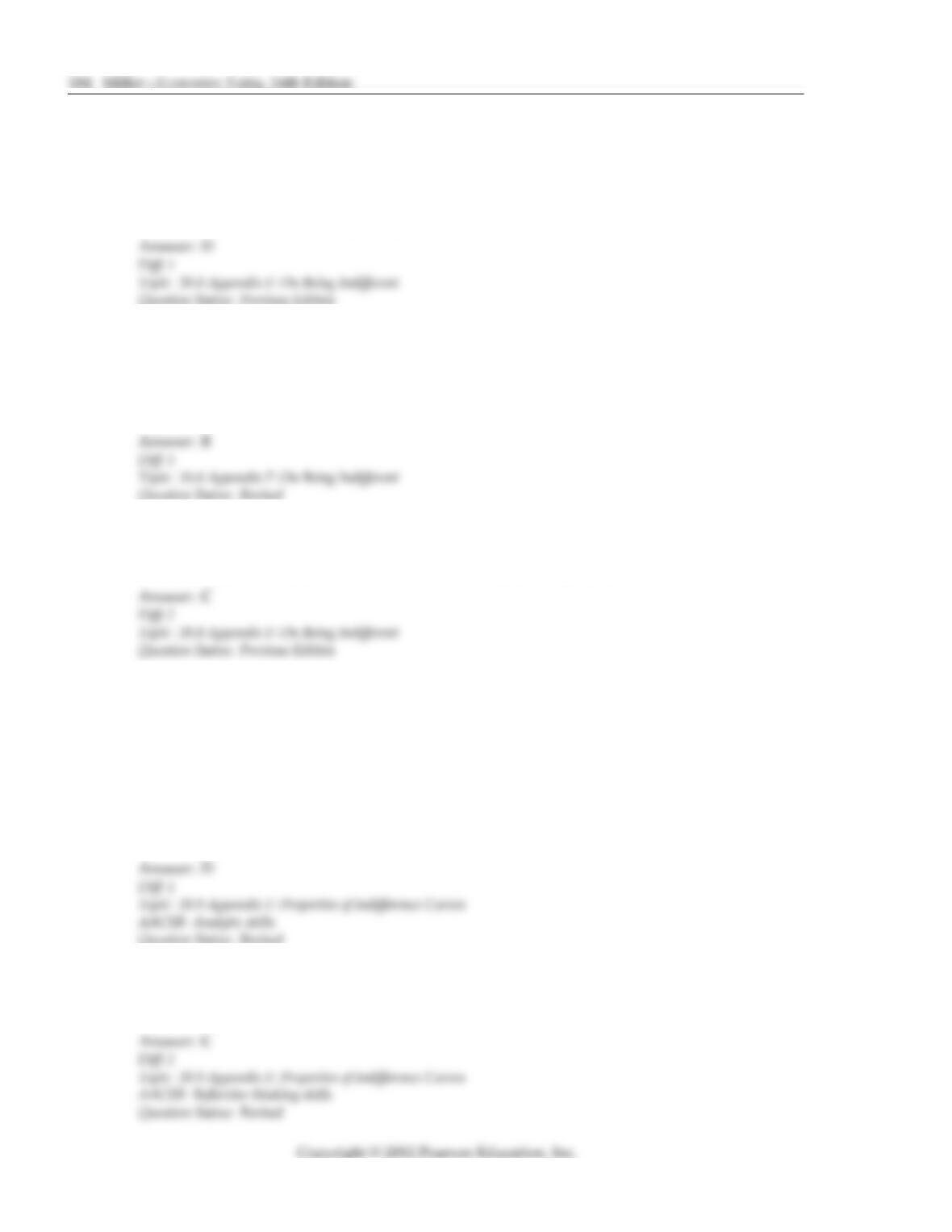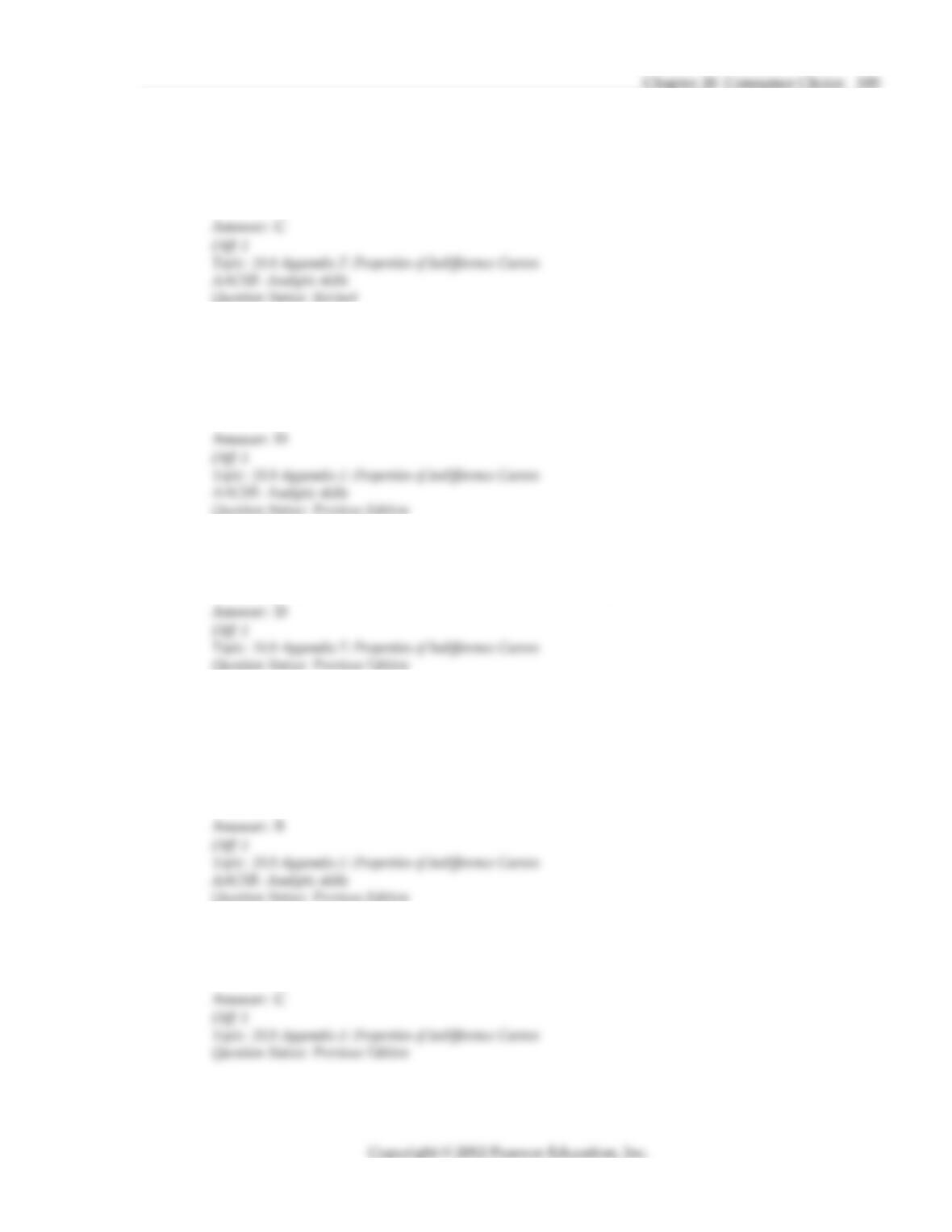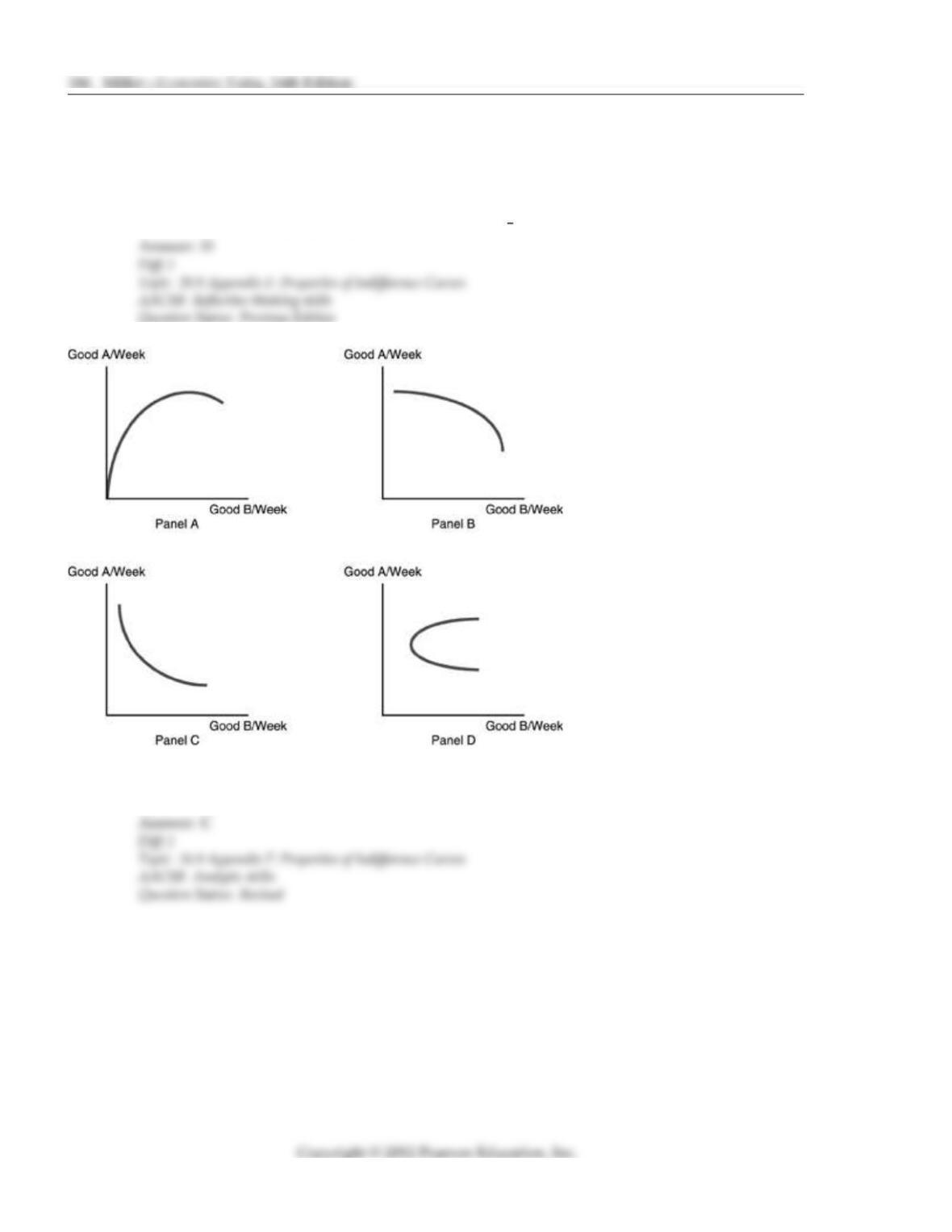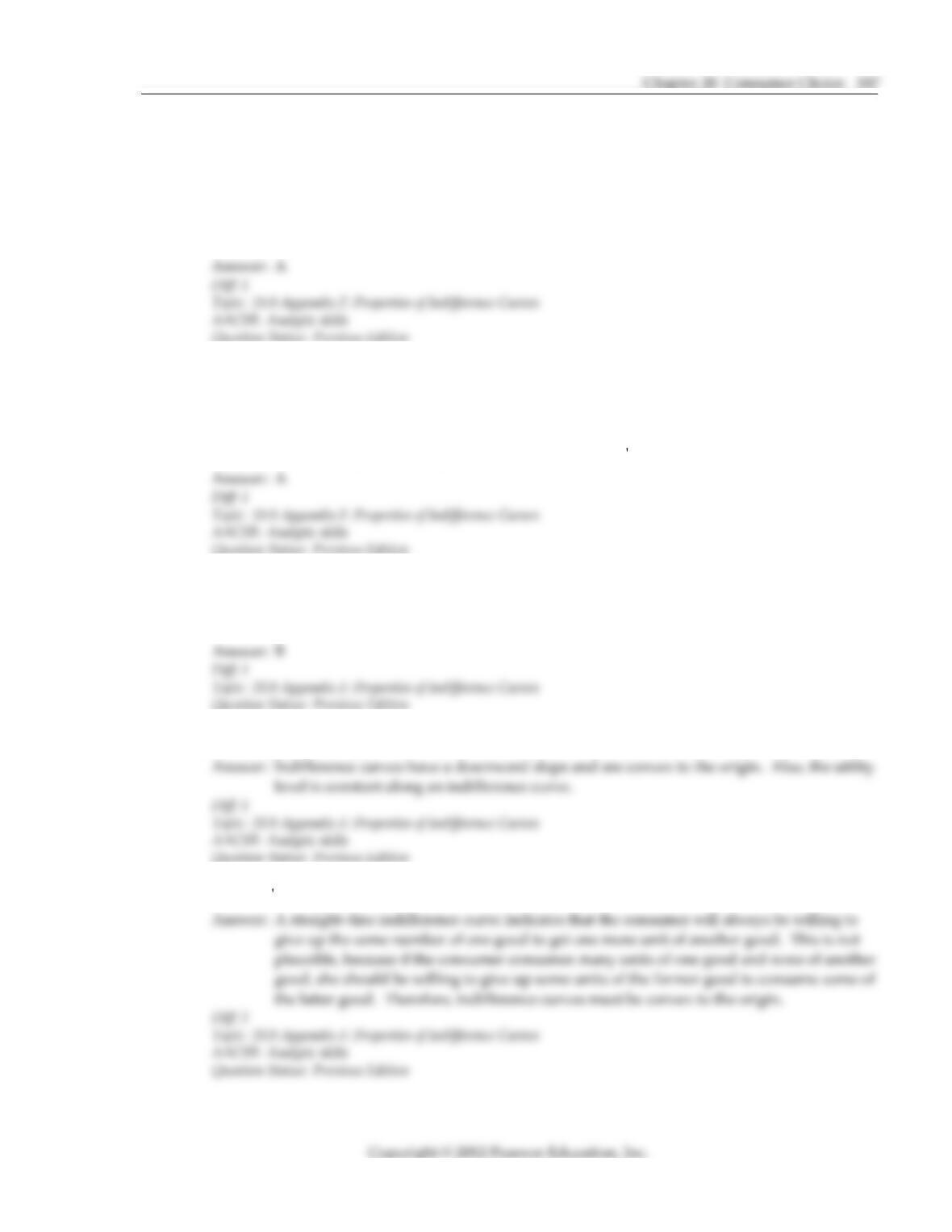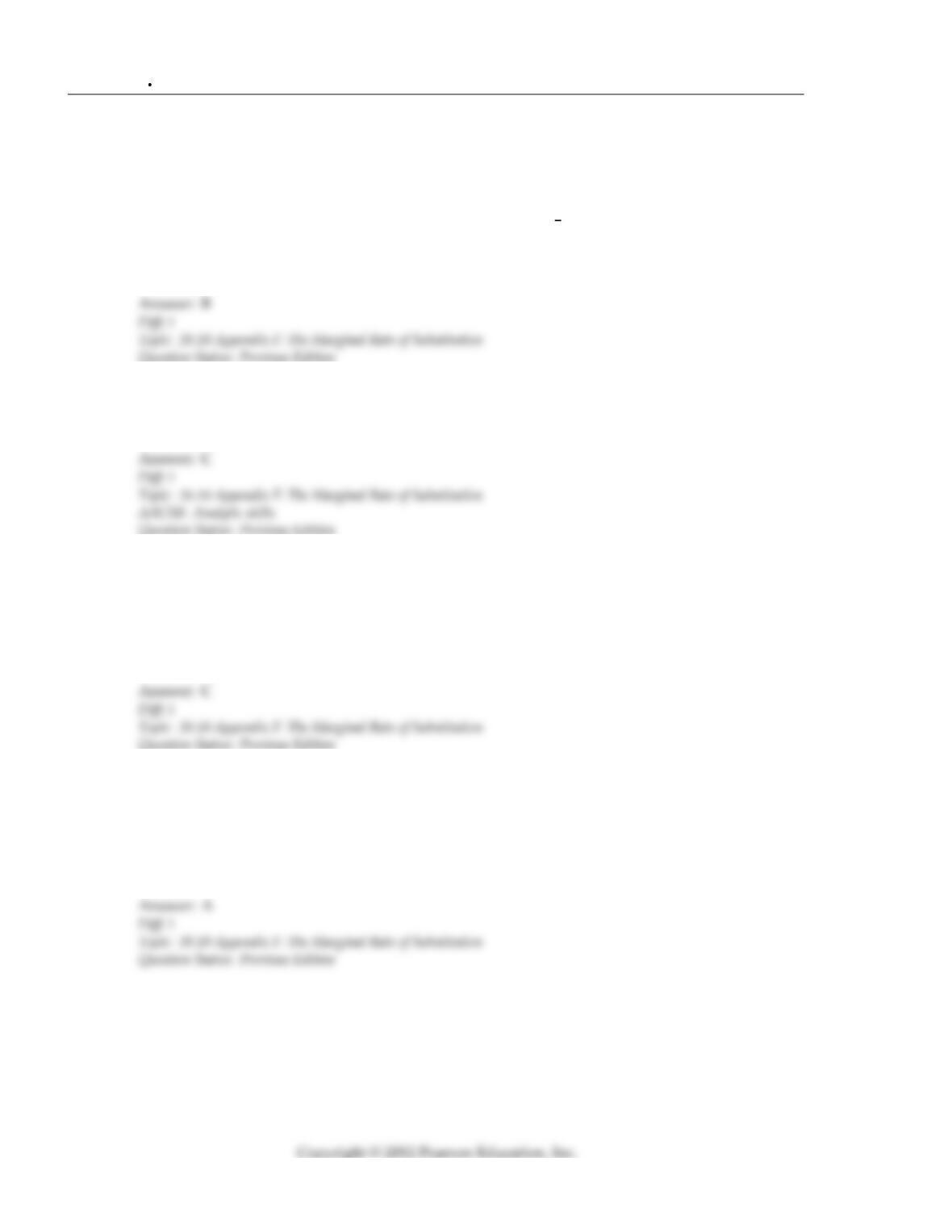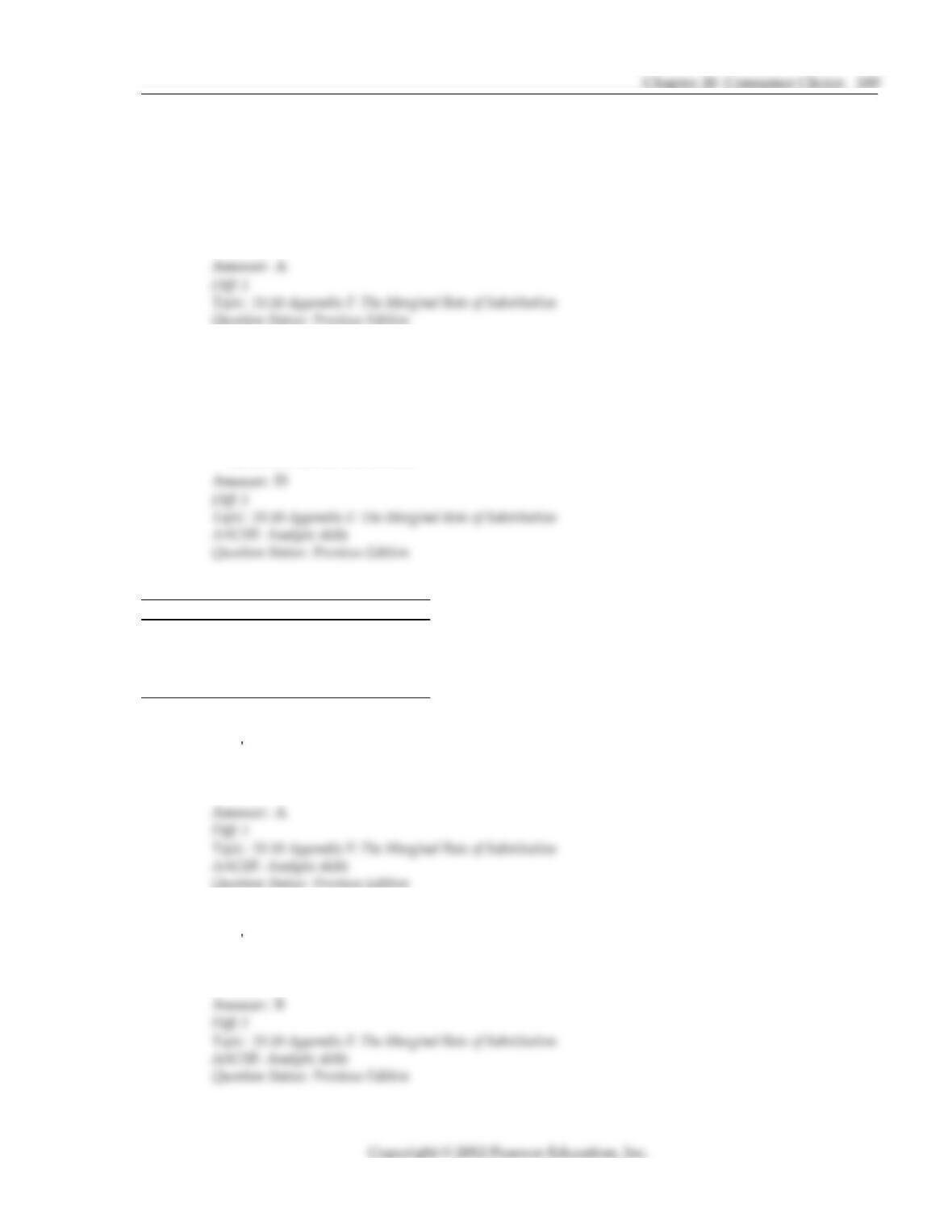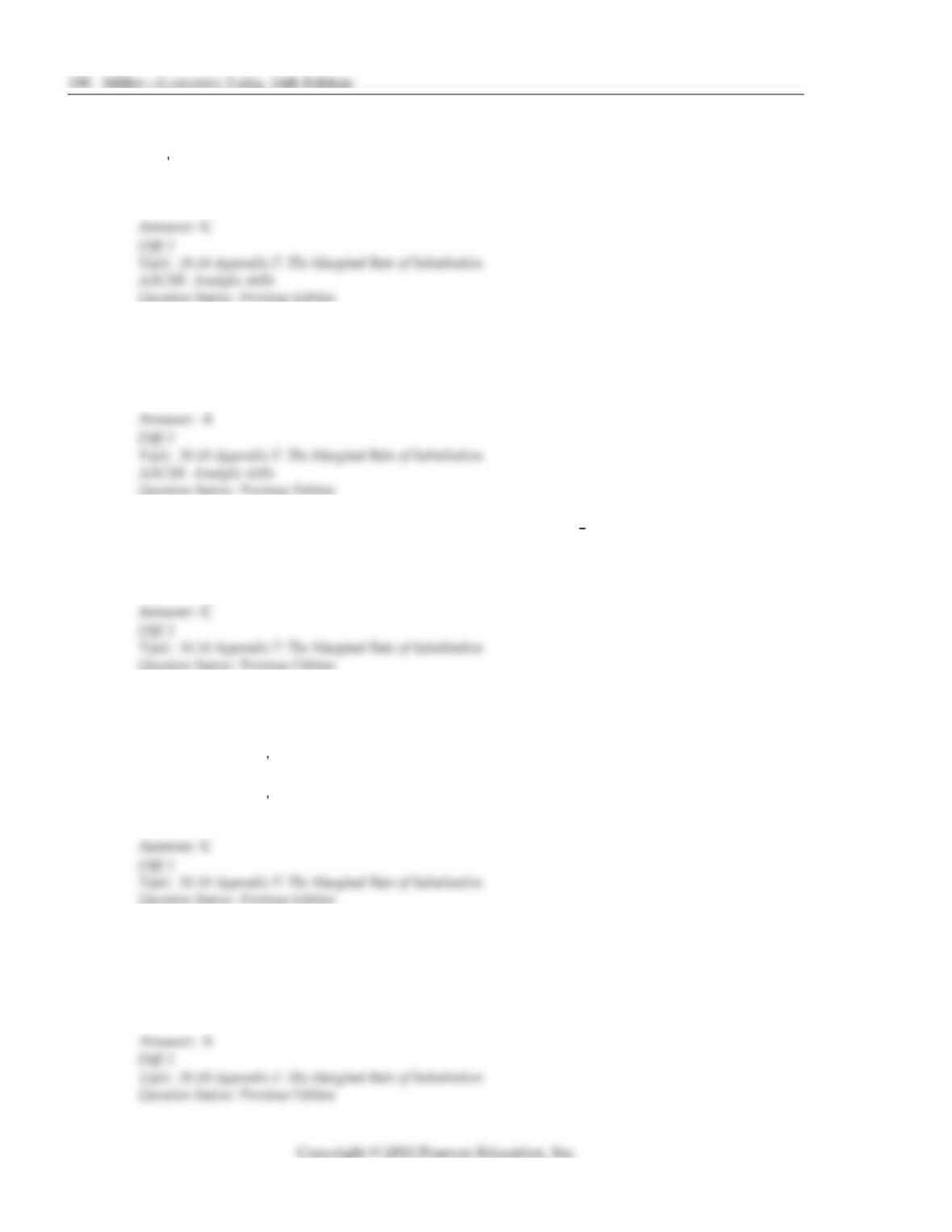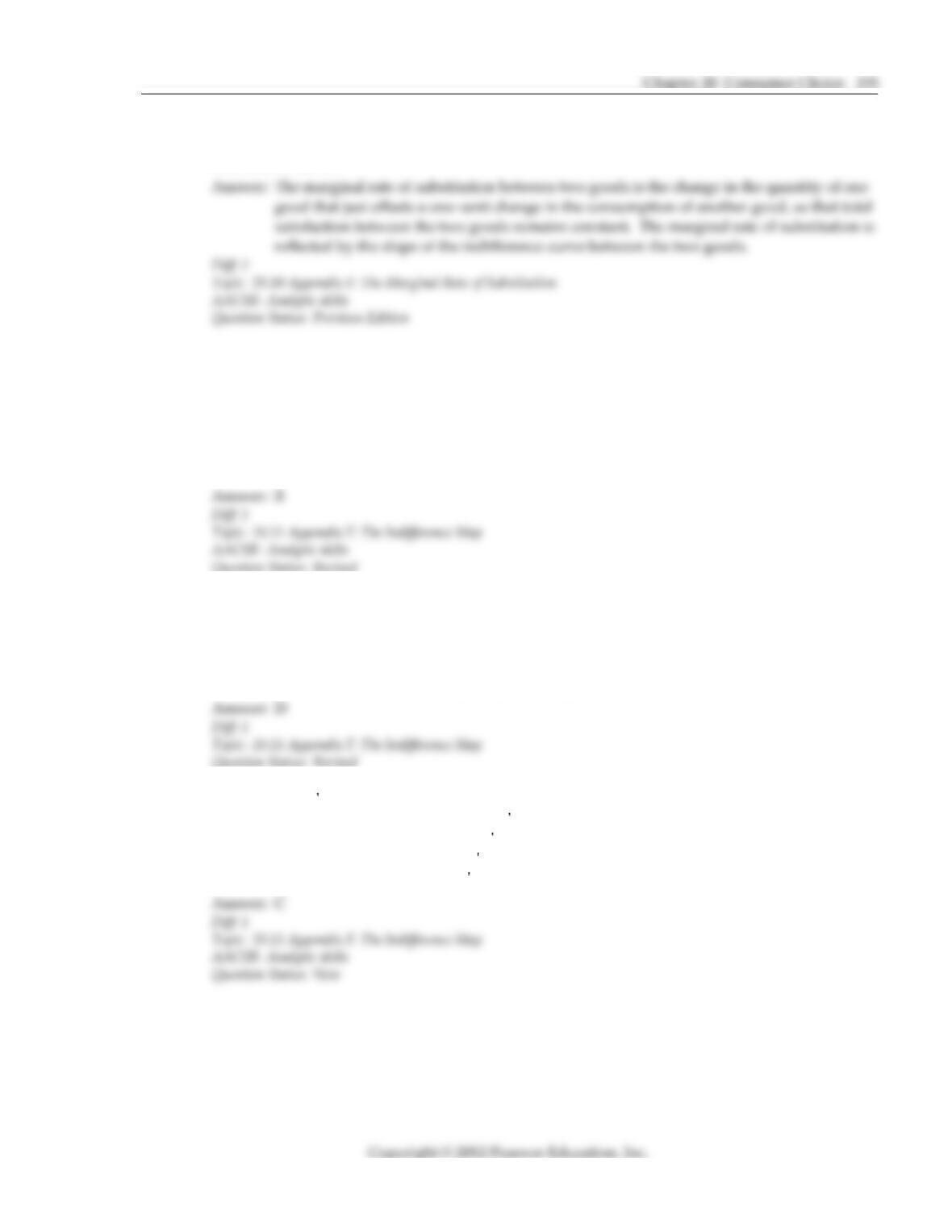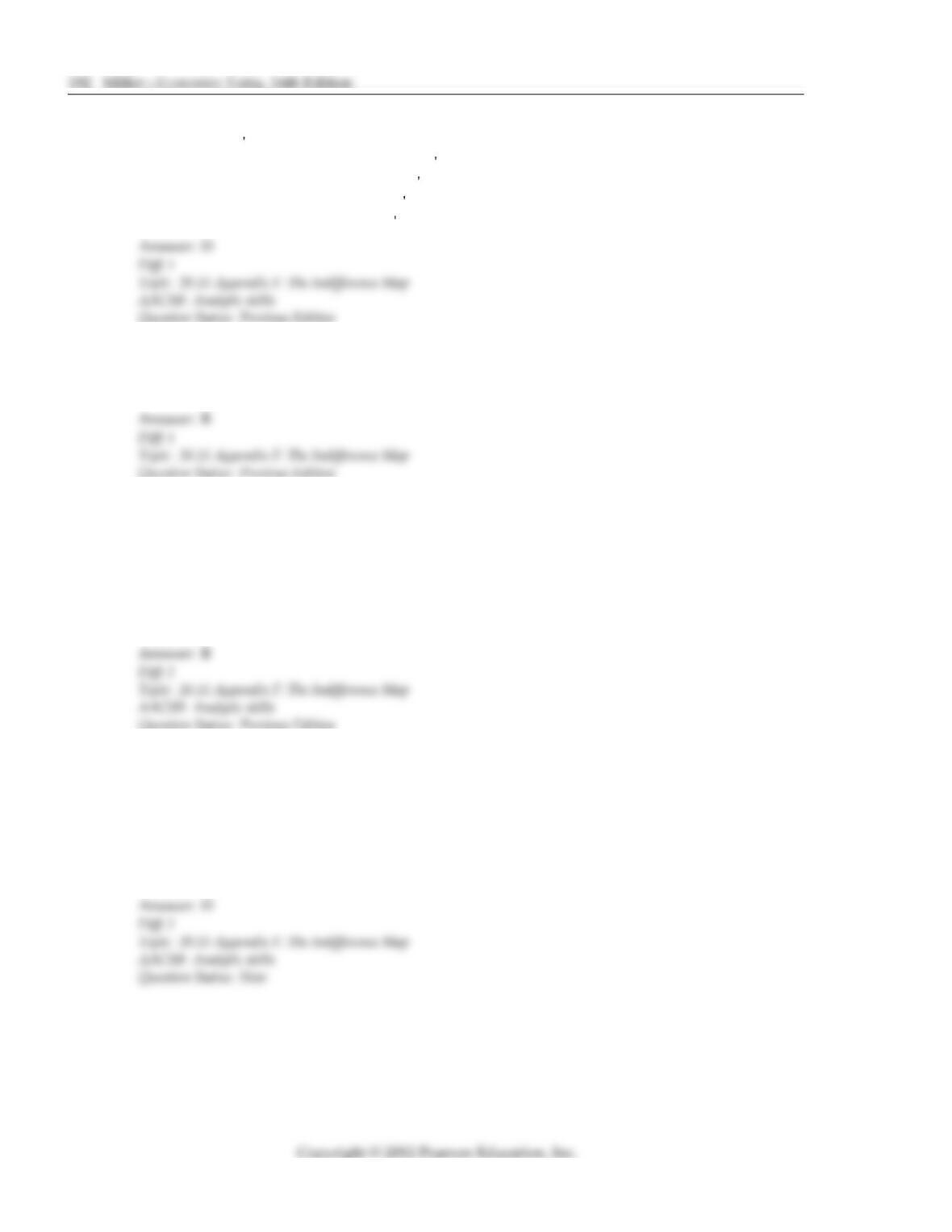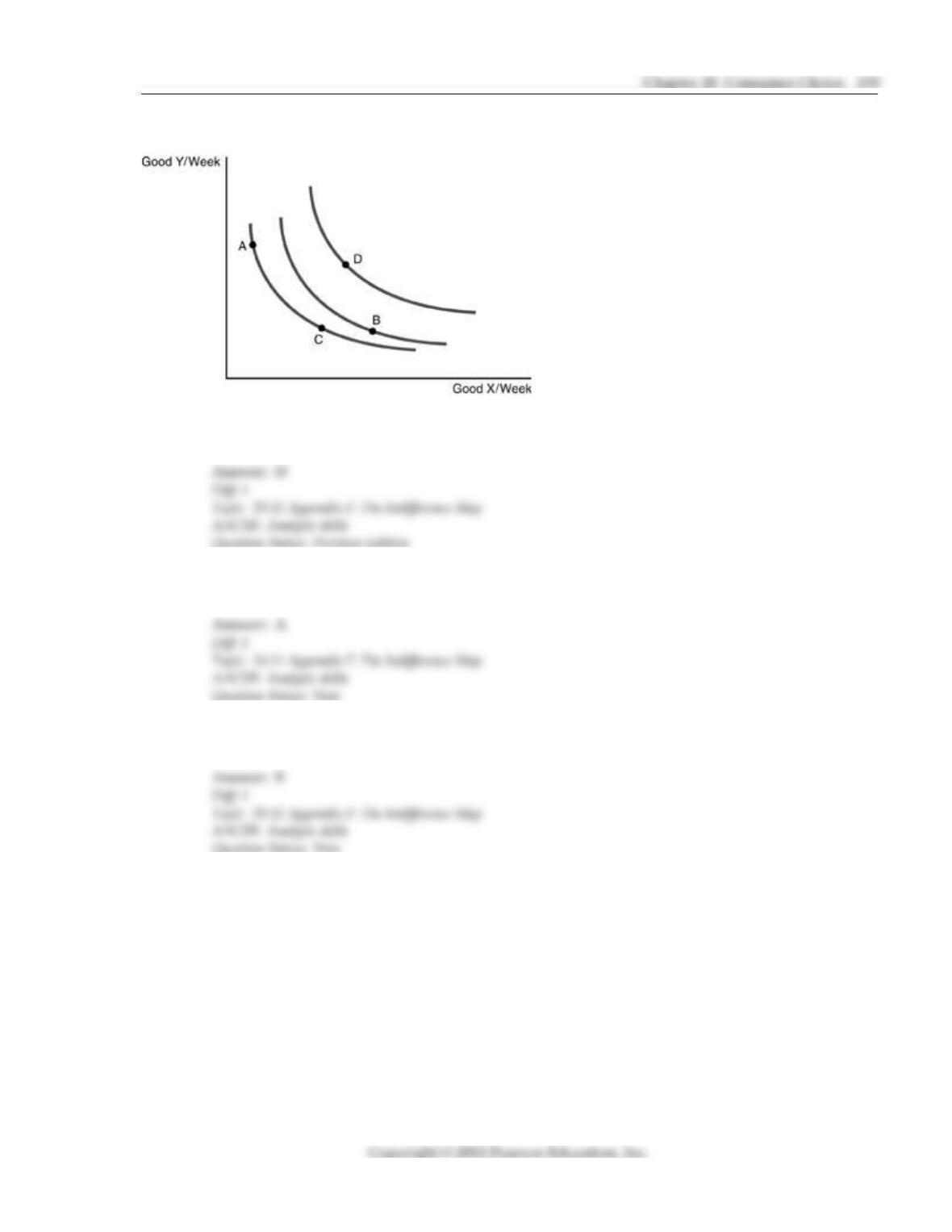Chapter 20 Consumer Choice 175
2) According to the substitution effect, if the price of a product goes down
A) the consumer will buy more of the good at the lower price than at a higher price, creating a
downward sloping demand curve.
B) the consumer will buy more of the good at a lower price than at a higher price, creating a
horizontal demand curve.
C) the consumer will not change the level of purchases of the good when the price changes,
making the demand curve a vertical line.
D) the real income of the consumer will increase, causing the consumer to want to buy more
of the good, creating a downward sloping demand curve.
3) The inverse relationship between quantity demanded and price of a good or service can be
explained, in part, by
A) a shift in the demand curve.
B) diminishing marginal utility only.
C) diminishing marginal utility and the rule of equal marginal utilities per dollar.
D) the real income effect.
4) Which of the following is FALSE?
A) A consumer is maximizing total utility when he or she gets the same amount of marginal
utility from the last dollar spent on each good purchased.
B) As additional units of a good or service are consumed, marginal utility diminishes.
C) Utility is want satisfying power.
D) Assuming that the law of diminishing marginal utility holds, the demand curve must be
upward sloping.
5) Given the utility optimizing rule and the presence of diminishing marginal utility for a good,
A) the demand curve for the good will be vertical.
B) there will not be a well defined demand curve.
C) there will not be a substitution effect.
D) the demand curve for the good will be negatively sloped.
